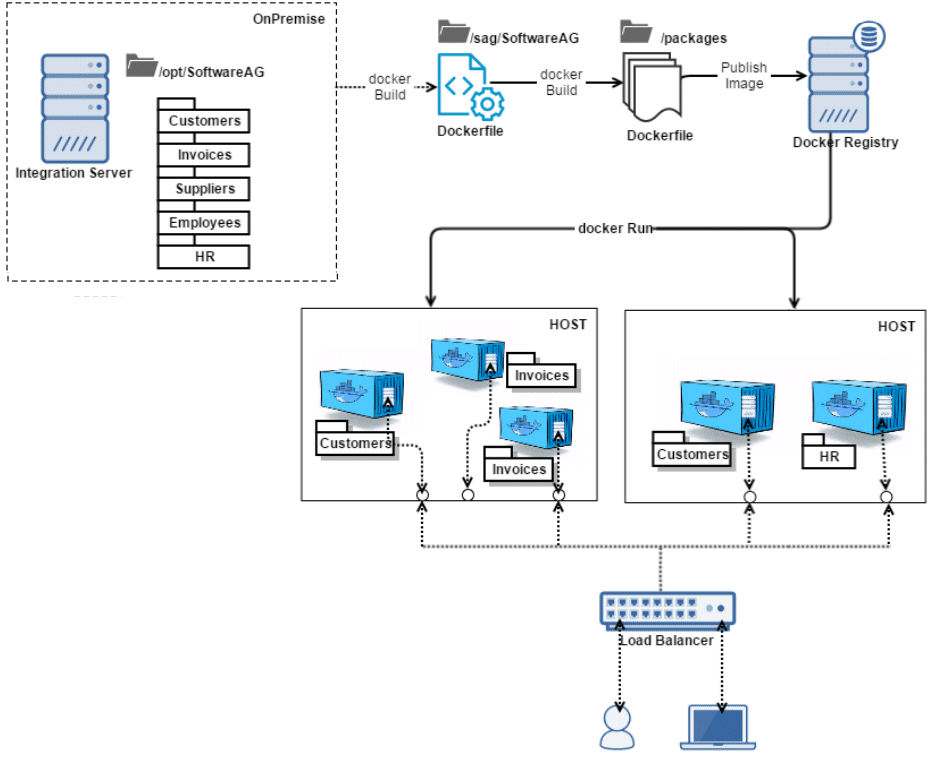What Is IBM webMethods Microservices Runtime?
IBM offers a lightweight container called IBM webMethods Microservices Runtime to host microservices you develop in IBM webMethods Designer. Using Microservices Runtime, you can deliver microservices as an Integration Server package that includes a set of related services, interfaces, document types, and triggers that subscribe to topics or queues, or as a set of related packages of this kind (for example, five packages relating to Human Resources functions).
Each microservice can run in its own Microservices Runtime and can communicate with lightweight mechanisms such as an HTTP resource API. However, you can also execute multiple microservices in the same Microservices Runtime. This hybrid solution enables you to separate microservices when needed, but also to group them when necessary. For example, suppose that you have two microservices that need to be scaled together in similar ways (that is, when you need a new instance of one, you need a new instance of the other). If you discover that one microservice is more heavily loaded than the other, or needs to be enhanced or updated more often, you could deploy the two microservices to separate Microservices Runtimes. If both microservices tend to be updated at the same time, you could cohost them in the same Microservices Runtime.
Microservices Runtime is fully compatible with IBM webMethods Integration Server and can also host services you develop using IBM webMethods Designer and Integration Server. While Microservices Runtime is optimized to have a reduced disk and memory footprint, you can convert it into a full Integration Server by installing additional modules, such as support for an external database.
Microservices Runtime is optimized for execution in a Docker container. You can run a microservice or a set of related microservices in a Docker container, precluding the need to purchase expensive virtual machines. Docker images include configuration, enabling you to deploy the exact same configuration anywhere. The Docker image can include one package or a set of related packages.

